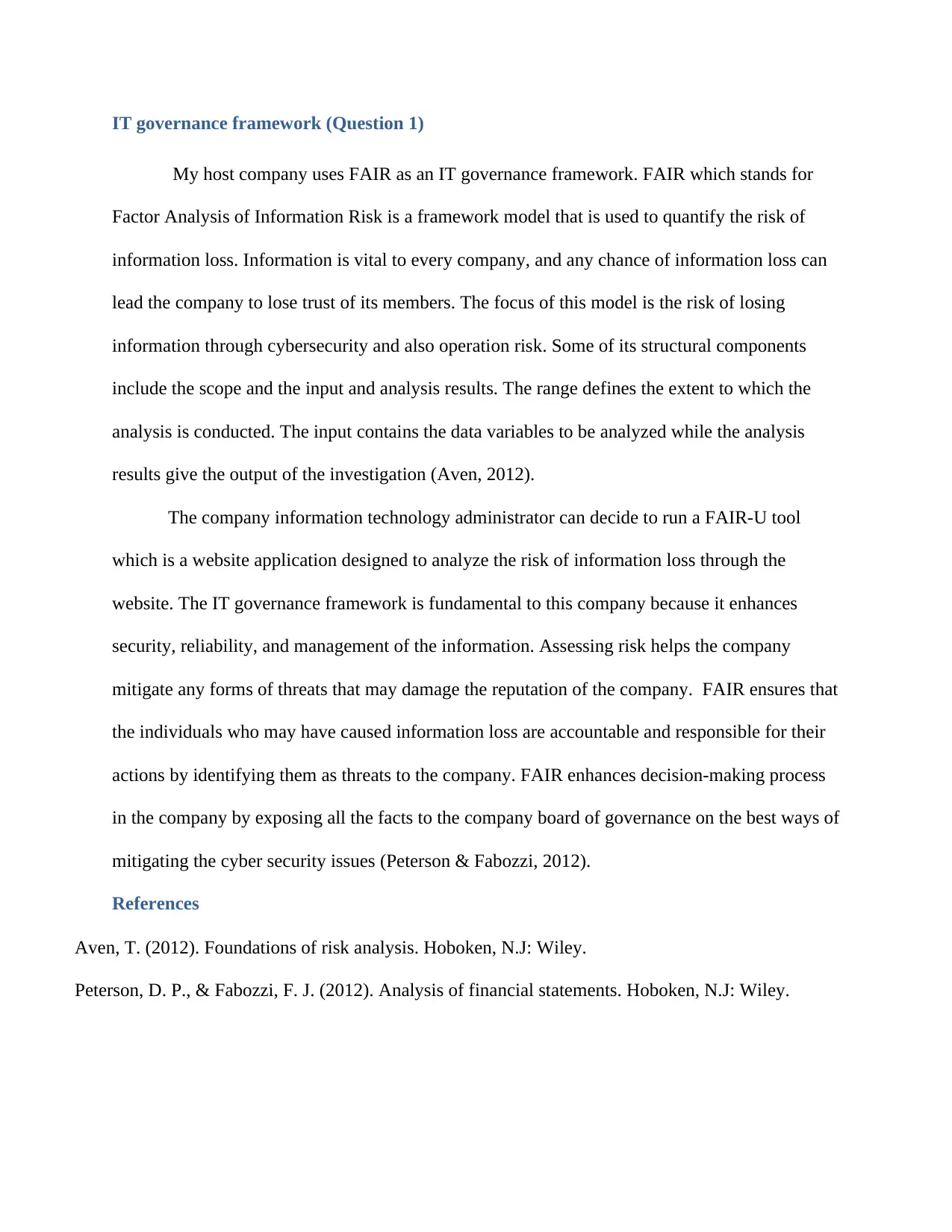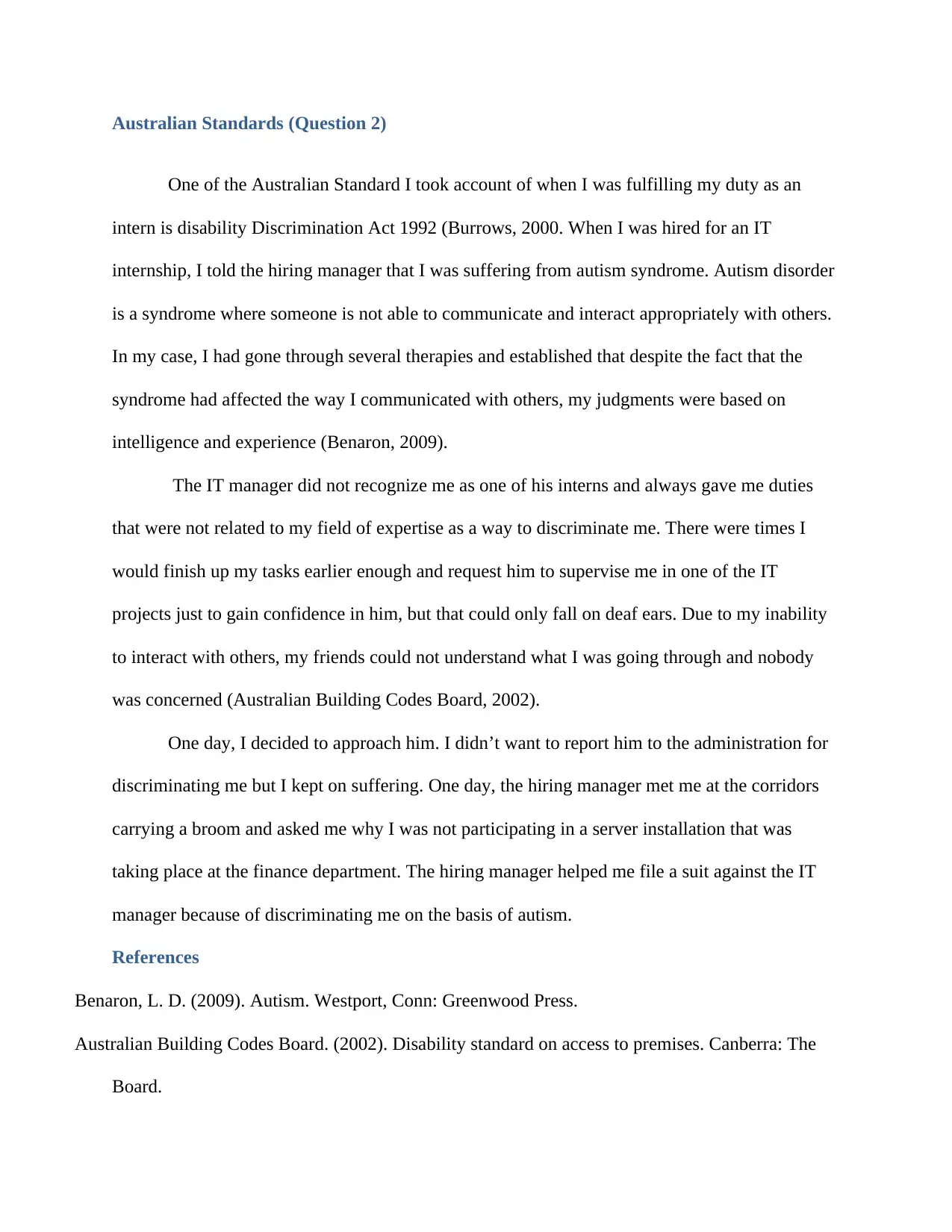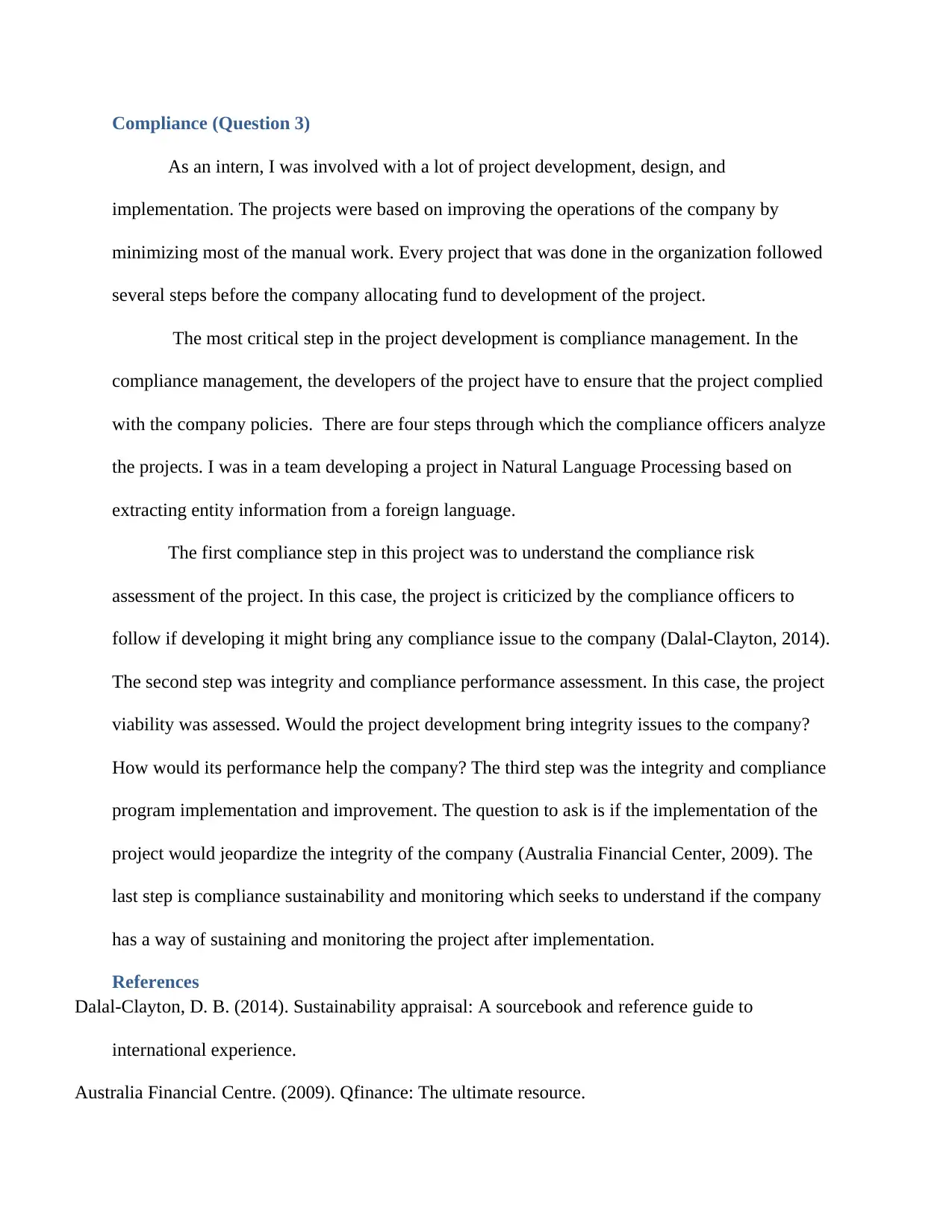IT Governance Framework Analysis, Standards, and Compliance Report
VerifiedAdded on 2020/05/28
|3
|983
|192
Report
AI Summary
This report provides an analysis of IT governance, Australian standards, and compliance within a company setting, drawing on an internship experience. The report begins by examining the Factor Analysis of Information Risk (FAIR) framework, used for quantifying information loss risk, and its impact on security, reliability, and decision-making. It then discusses the application of the Disability Discrimination Act 1992 in the context of an IT internship, highlighting a case of discrimination related to autism and the importance of adhering to Australian standards. Finally, the report details the steps involved in compliance management for project development, particularly in the context of a Natural Language Processing project, emphasizing the assessment of compliance risks, integrity, and sustainability. The report references several academic sources to support the presented information and provides a comprehensive overview of IT governance and compliance practices.
1 out of 3




![[object Object]](/_next/static/media/star-bottom.7253800d.svg)